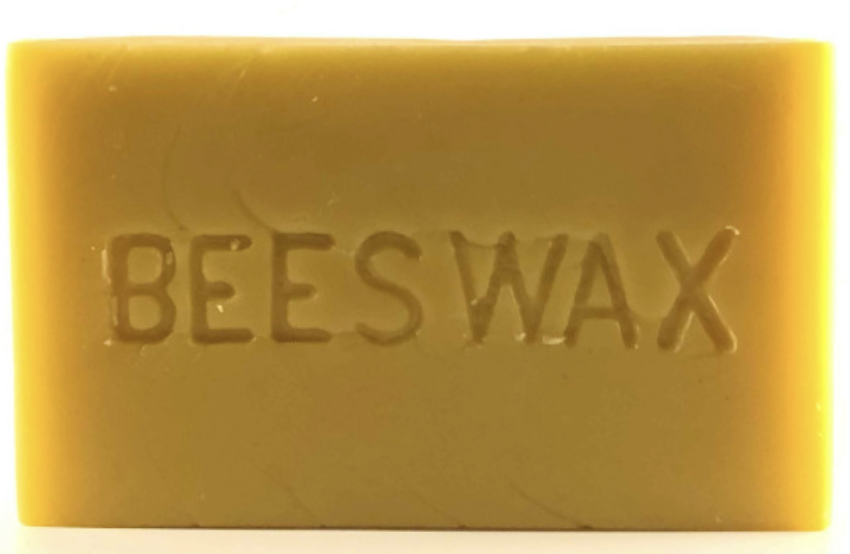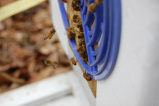 Along with honey our hives also produce beeswax which is a natural occurring wax produced in special glands of the worker bees. The wax is produced by each bee in a thin layer and the hive uses it to form and construct the honeycomb. The honeycomb is used to stored nectar, pollen and brood. Honey bees essentially build their home from beeswax and a new hive will spend the early part of the year building out the comb in the foundation of a new hive. It requires a lot of resources for a hive to create beeswax and it is estimated that it takes 8 pounds of honey to make one pound of beeswax. That males make it a very valuable product to both the honey bee and beekeeper. Beeswax is an incredible product that we don't typically have a lot to offer to our customers. As we have discussed in past blog posts, the team at SeaBee has been experimenting with beeswax to produce a skiing and snowboarding all purpose wax that is all natural and safe for the environment. The wax we use for this product is the older wax that we turn over in our hives. This wax is darker and has been stained by being tracked on by hundreds of thousands of bees. It is our policy that older wax should never be used for anything other than industrial purposes since the wax can also hold environmental contaminants that bees have tracked into the hive. While bees will keep the top of the comb as clean as they can never fully clean it. It is a beekeepers duty to help the bees remove this older wax from the hive. A experienced beekeeper can identify old wax just by looking at it but new beekeepers may want to date their frames so they know for certain how old the wax in the hive is. The limited amount of wax we produce and sell comes from the cappings wax from our honey extraction process. When nectar is cured into honey, the bees will cap it with a new layer of wax. This capping is ,in most cases, a new freshly created wax covering. During our extraction process this top layer that is cut off into the capping tanks. The honey goes into the extractor and the capping drain out or are spun again to remove the residual honey. Once this process is completed, we are left with the wax cappings that are then put into our wax melter, a large stainless steel tank with a heating element. This process involves adding the cappings to about `10 gallons of fresh water in the tank. The water is heated to the beeswax melting point and the wax floats to the top of the stainless steel container. Any pollen, propolis, and honey left in the wax will form a layer under the wax. We then open a gate on the side of the tank that will let the molten wax flow out of the tank into a couple of filters that will remove any other particles. The wax is then put into another cleaner container and filtered again into larger molds. Once these larger wax blocks cool they are then heated another final time and once again filtered into their final form (1lb block, 1oz block or pastilles). The end result is a yellow cake of pure beeswax that has a beautiful fragrance and tacky ,but not sticky, feel to it. This is the wax we provide to our customers who use it in a number of innovative and thoughtful ways.
0 Comments
Leave a Reply. |
Details
SEABEE HONEY BLOGAuthorA beekeeper in New Hampshire [email protected] Archives
December 2023
Categories
All
|

 RSS Feed
RSS Feed